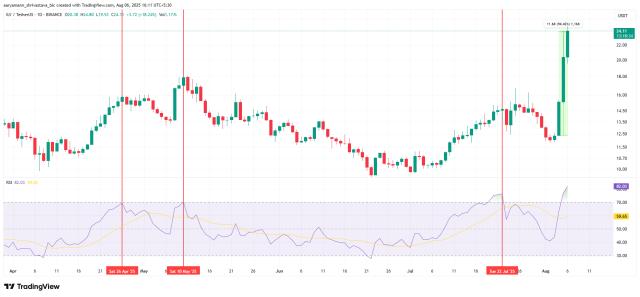The global AI large language model competition has never stopped. Today, Musk announced that Grok 2 will be open-sourced next week. His xAI's fourth-generation language model, Grok 4, was previously released on July 9th, focusing on larger multimodal input and enhanced reasoning.
We will depict the Grok release timeline and technical breakthroughs using an inverted pyramid structure, then compare Grok with GPT-4o and Gemini, and finally analyze why Musk maintains an "open-source philosophy".
Grok 4 Countdown: Timeline and Core Upgrades
The Grok series iteration is very quick. Grok 2 will go online in August 2024, providing 128,000 tokens context and image generation.
Grok 3, emerging in early 2025, will further improve reasoning. According to public information, Grok 4 will debut on July 9th, expected to add more comprehensive multimodal input and strengthen long-text reasoning, attempting to expand application scenarios. Following Musk's "new version release, previous version open-source" convention, Grok 2 is preparing to be open-sourced next week, allowing developers to freely experiment with the source code.
Differences with GPT-4o and Gemini
Currently, the three major models have their strengths:
- Grok 4: Through deep integration with X (Twitter), it can read social dynamics in real-time, especially quick in monitoring market sentiment or topics, monthly fee around $16 (X Premium+).
- GPT-4 / 4o: Strong in natural conversation, code tools, and multilingual support, enterprise version offers customization, subscription price $20–25.
- Gemini 2.5 Pro / Advanced: Supports up to 1,000,000 tokens of context, fully supporting text, images, audio, video, deeply integrated with Google Workspace, monthly fee around $20.
In user dialogue style, Grok approaches young audiences with a humorous, avant-garde, and "anti-traditional" tone. GPT-4o focuses on fluency and humanization; Gemini leans towards formal and task-oriented.
In multimodal capabilities, Grok 4 has released Grok Imagine to complement video and audio production functions, but catching up with Gemini's comprehensiveness remains to be developed.
Further Reading: Grok Imagine Lands on App Store for Download, "Spicy Mode" Can Produce Semi-Nude Borderline Visual Audio Images
Behind Musk's Preference for Open Source
Musk emphasizes that AI must remain transparent and verifiable. He once positioned Grok as a tool that "maximally seeks truth" and is "anti-awakening", implementing open-source through actions. He once said:
We want anyone to be able to examine the model, find biases, and correct them together.
The open-source strategy breaks the monopoly of closed models, lowers entry barriers, and also sparks controversy. Open-sourcing allows more researchers to examine algorithms, but Grok does not avoid sensitive topics and has been pointed out to generate offensive content. xAI has therefore added prompt examples and content filtering options to balance freedom and responsibility.
In the market's future expectations, Grok's real-time intelligence advantage might extend to Musk's businesses, such as Tesla's autonomous driving and SpaceX's wireless satellite network. Whether open-source becomes mainstream remains to be verified by time, but transparency and accountability are becoming new competitive thresholds in the AI industry.
As the Grok series continues to open-source and iterate, it may take more than 2 years before the market can review whether "rapid iteration, real-time data, and open-source spirit" are a powerful means of leading AI commercialization?








